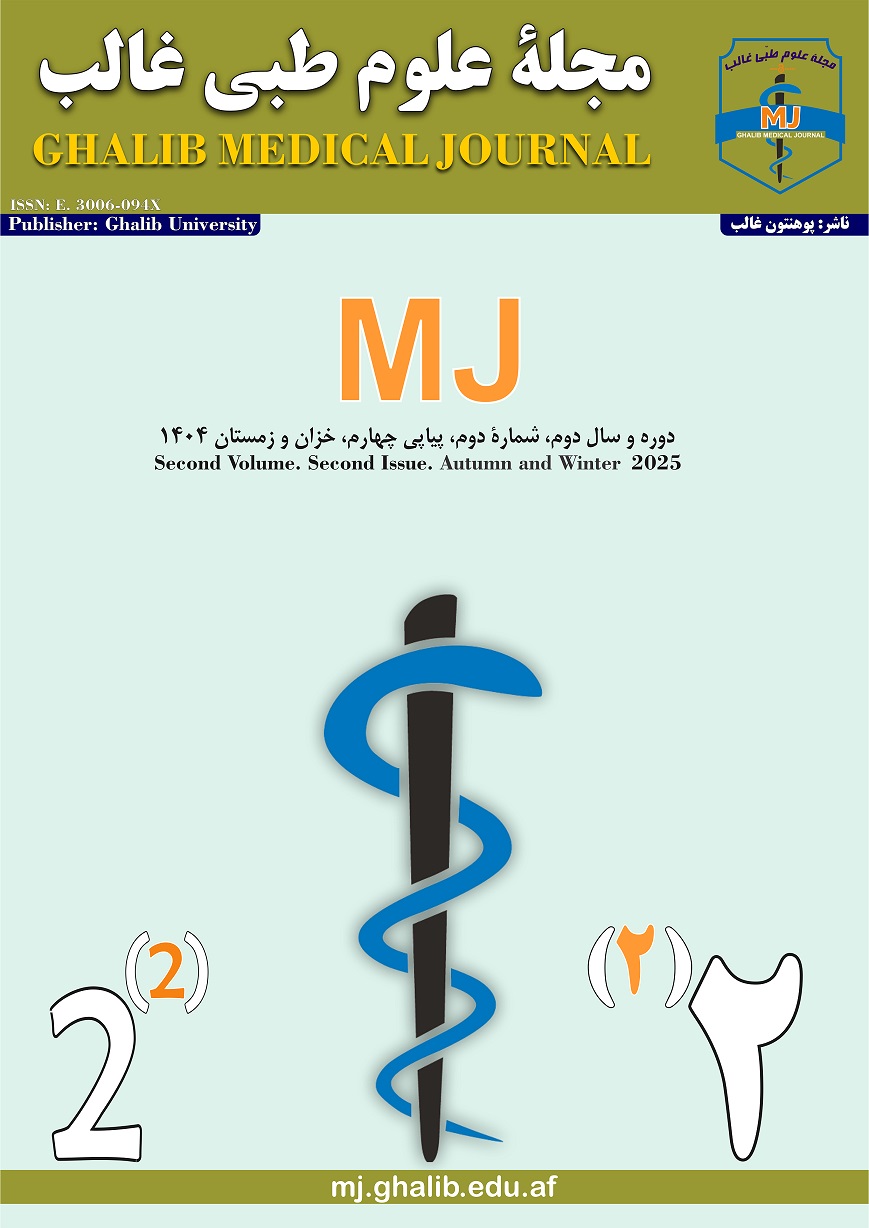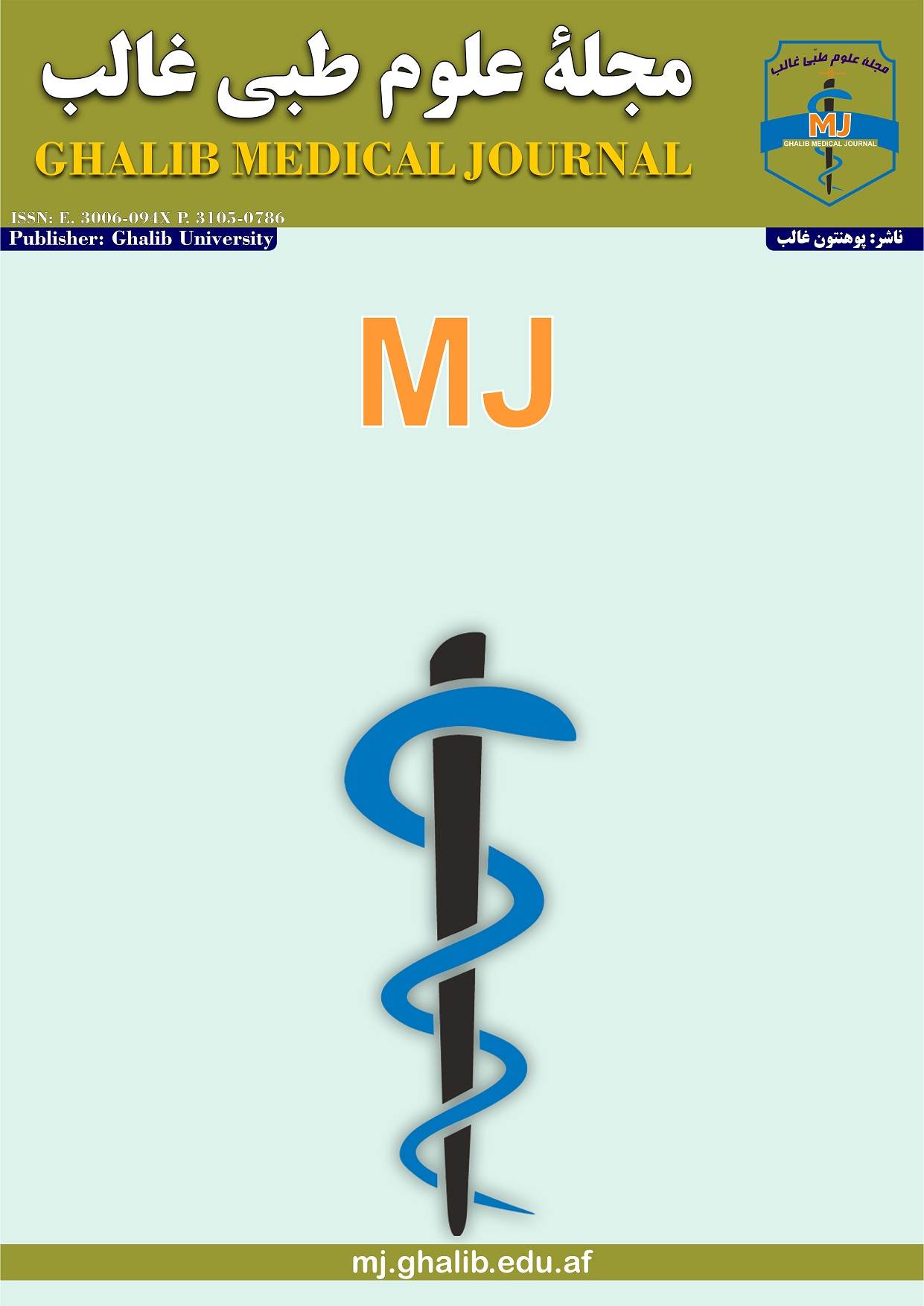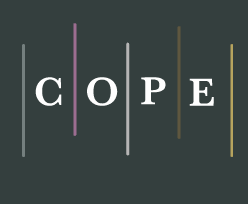Atomic approaches in cancer therapy: advances, mechanisms, and clinical applications
DOI:
https://doi.org/10.58342/ghalibMj.V.2.I.2.10Keywords:
Atom-based therapy, Radiopharmaceuticals, Nanoparticles, Theranostics, Cancer treatmentAbstract
Background: Atom-based cancer therapies have emerged as a promising class of treatment modalities that exploit the unique physical and chemical properties of various atoms, particularly radioactive isotopes and metallic nanoparticles, for precise and selective tumor targeting. These approaches offer significant advantages over conventional therapies in terms of specificity, minimal invasiveness, and potential for integration with diagnostic tools. This review aims to provide a comprehensive overview of atom-based therapeutic strategies in oncology, highlighting key atomic elements, mechanisms of action, clinical applications, and technological advancements. The discussion also addresses current challenges and explores future directions in this evolving field.
Methods: This review was conducted according to the PRISMA guidelines. A comprehensive search of PubMed, ScienceDirect, Scopus, and Web of Science was carried out between April and July 2025 using keywords such as "atom-based cancer therapy," "radiopharmaceuticals," "nanoparticles," "alpha emitters," "proton therapy," and "theranostics in oncology." Articles published between 2000 and 2025, written in English, with full-text availability and experimental or clinical data were included. From an initial 215 records, after screening and removal of duplicates and irrelevant studies, 19 eligible articles were finally selected for analysis.
Results: Several atom-based therapies, such as Iodine-131 for thyroid cancer, Lutetium-177 for neuroendocrine tumors, and Radium-223 for metastatic prostate cancer, have demonstrated strong therapeutic outcomes with favorable safety profiles. In parallel, novel platforms involving gold and iron oxide nanoparticles offer promising routes for photothermal therapy and radiosensitization. Nonetheless, barriers such as limited accessibility, complex dosimetry, and biological resistance continue to hinder widespread adoption.
Conclusion: Atom-based therapies represent a transformative advancement in modern oncology, with the potential to reshape cancer treatment through enhanced precision, reduced systemic toxicity, and real-time monitoring. Continued interdisciplinary research and infrastructure development are essential to translate these innovations into widely accessible and personalized cancer care.
References
Sung H, Ferlay J, Siegel RL, Laversanne M, Soerjomataram I, Jemal A, Bray F. Global cancer statistics 2020: GLOBOCAN estimates of incidence and mortality worldwide for 36 cancers in 185 countries. CA: a cancer journal for clinicians. 2021 May;71(3):209-49. https://doi.org/10.3322/caac.21660
Miller KD, Nogueira L, Devasia T, Mariotto AB, Yabroff KR, Jemal A, Kramer J, Siegel RL. Cancer treatment and survivorship statistics, 2022. CA: a cancer journal for clinicians. 2022 Sep;72(5):409-36. https://doi.org/10.3322/caac.21731
Li L, Shan T, Zhang D, Ma F. Nowcasting and forecasting global aging and cancer burden: analysis of data from the GLOBOCAN and Global Burden of Disease Study. Journal of the National Cancer Center. 2024 Sep 1;4(3):223-32. https://doi.org/10.1016/j.jncc.2024.05.002
Chakraborty K, Mondal J, An JM, Park J, Lee YK. Advances in radionuclides and radiolabelled peptides for cancer therapeutics. Pharmaceutics. 2023 Mar;15(3):971. https://doi.org/10.3390/pharmaceutics15030971
Watabe T, Hirata K, Iima M, Yanagawa M, Saida T, Sakata A, Ide S, Honda M, Kurokawa R, Nishioka K, Kawamura M. Recent advances in theranostics and oncology PET: emerging radionuclides and targets. Annals of Nuclear Medicine. 2025 Jul 27:1-3. https://doi.org/10.1007/s12149-025-02090-z
Samathoti P, Kumarachari RK, Bukke SP, Rajasekhar ES, Jaiswal AA, Eftekhari Z. The role of nanomedicine and artificial intelligence in cancer health care: individual applications and emerging integrations—a narrative review. Discover Oncology. 2025 May 8;16(1):697. https://doi.org/10.1007/s12149-025-02090-z
Sgouros G, Bodei L, McDevitt MR, Nedrow JR. Radiopharmaceutical therapy in cancer: clinical advances and challenges. Nature reviews Drug discovery. 2020 Sep 1;19(9):589-608.. https://doi.org/10.1038/s41573-020-0085-5
Schubiger PA, Grünberg J, Ametamey SM, Honer M, Garcia-Garayoa E, Bläuenstein P, Waibel R, Novak-Hofer I, Schibli R. Radiopharmaceuticals: from molecular imaging to targeted radionuclide therapy. Chimia. 2004 Oct 1;58(10):731. https://doi.org/10.2533/000942904777677489
Brechbiel MW. Targeted α-therapy: past, present, future? Dalton Transactions. 2007(43):4918-28. https://doi.org/10.1039/B704726F
Gao Q, Zhang J, Gao J, Zhang Z, Zhu H, Wang D. Gold nanoparticles in cancer theranostics. Frontiers in bioengineering and biotechnology. 2021 Apr 13;9:647905. https://doi.org/10.3389/fbioe.2021.647905
Vangijzegem T, Lecomte V, Ternad I, Van Leuven L, Muller RN, Stanicki D, Laurent S. Superparamagnetic iron oxide nanoparticles (SPION): from fundamentals to state-of-the-art innovative applications for cancer therapy. Pharmaceutics. 2023 Jan 10;15(1):236. https://doi.org/10.3390/pharmaceutics15010236
Dürr S, Janko C, Lyer S, Tripal P, Schwarz M, Zaloga J, Tietze R, Alexiou C. Magnetic nanoparticles for cancer therapy. Nanotechnology Reviews. 2013 Aug 1;2(4):395-409. https://doi.org/10.1515/ntrev-2013-0011
Durante M, Orecchia R, Loeffler JS. Charged-particle therapy in cancer: clinical uses and future perspectives. Nature Reviews Clinical Oncology. 2017 Aug;14(8):483-95. https://doi.org/10.1038/nrclinonc.2017.30
Jadvar H. Targeted radionuclide therapy: an evolution toward precision cancer treatment. American Journal of Roentgenology. 2017 Aug;209(2):277-88. https://doi.org/10.2214/AJR.17.18264
Williamson CW, Liu HC, Mayadev J, Mell LK. Advances in external beam radiation therapy and brachytherapy for cervical cancer. Clinical Oncology. 2021 Sep 1;33(9):567-78. https://doi.org/10.1016/j.clon.2021.06.012
Buczyńska A, Sidorkiewicz I, Rogucki M, Siewko K, Adamska A, Kościuszko M, Maliszewska K, Kozłowska G, Szumowski P, Myśliwiec J, Dzięcioł J. Oxidative stress and radioiodine treatment of differentiated thyroid cancer. Scientific reports. 2021 Aug 24;11(1):17126. https://doi.org/10.1038/s41598-021-96637-5
Niu T, Fan M, Lin B, Gao F, Tan B, Du X. Current clinical application of lutetium‑177 in solid tumors. Experimental and Therapeutic Medicine. 2024 Mar 26;27(5):225. https://doi.org/10.3892/etm.2024.12514
Alshehri AH. Bone-Targeting Radionuclides in the Treatment of Metastatic Castration-Resistant Prostate Cancer: A Review on Radium-223 Chloride (Alpharadin) in Combination with Other Therapies. Diagnostics. 2024 Oct 29;14(21):2407. https://doi.org/10.3390/diagnostics14212407
Hu H, Zheng S, He C, Zheng Y, Wei Q, Chen S, Wu Z, Xu Y, Zhao B, Yan C. Radiotherapy-sensitized cancer immunotherapy via cGAS-STING immune pathway by activatable nanocascade reaction. Journal of Nanobiotechnology. 2024 May 9;22(1):234. https://doi.org/10.1186/s12951-024-02502-8
Published
How to Cite
Issue
Section
License
Copyright (c) 2025 بهنام اکبری, علی کلانتری, محمداحسان صالحی

This work is licensed under a Creative Commons Attribution 4.0 International License.










